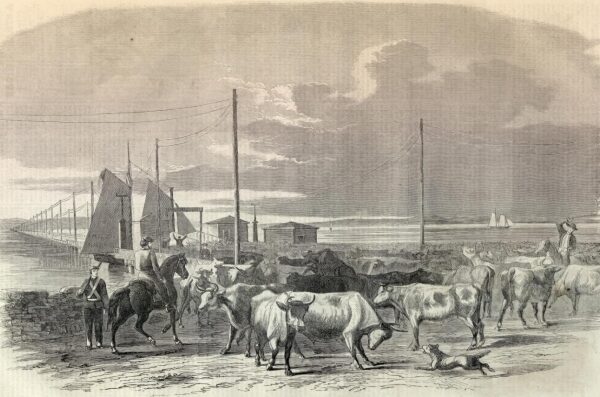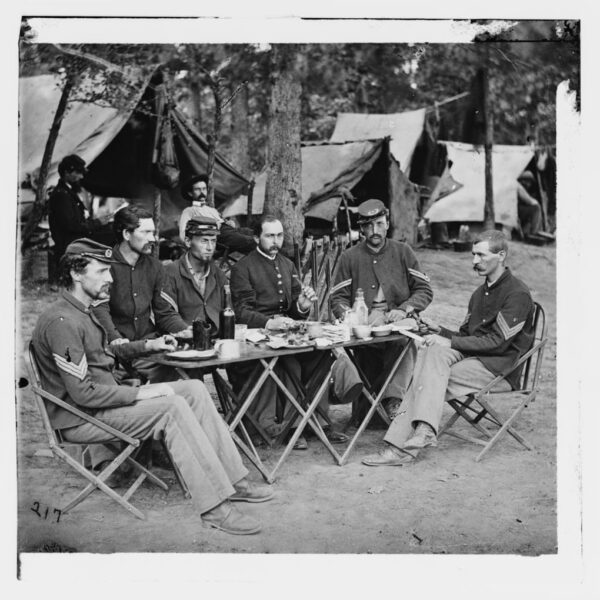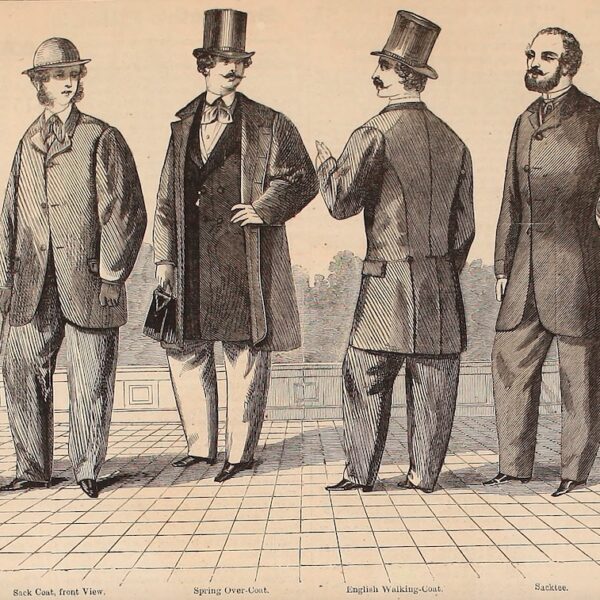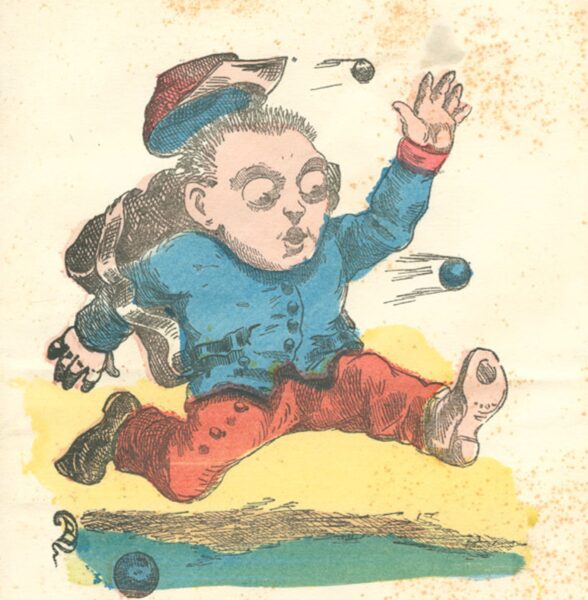“It is not too much to say that the election which has just passed over in such significant and remarkable quiet was one of the most momentous that ever challenged public attention; for it was not alone of the interests of our own Republic that trembled in the balance, but those of the whole world.” So wrote the editors of Frank Leslie’s Illustrated Newspaper a few weeks after presidential election of November 8, 1864, in which Abraham Lincoln faced—and decisively defeated—Democratic challenger George B. McClellan. Shown here are illustrations from the time that shed light on the voting process—on the homefront and in the army—associated with that vital election.
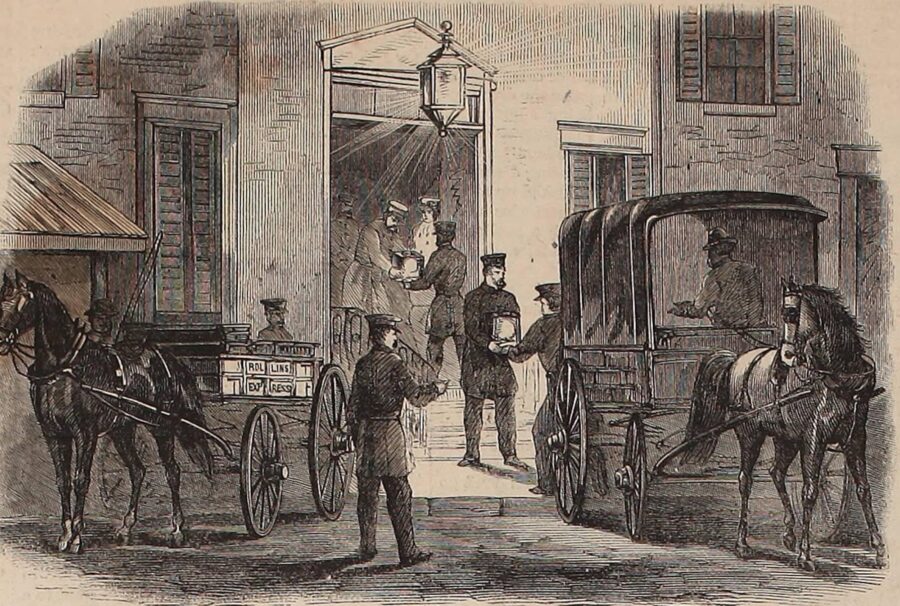
In its November 26, 1864, issue, Frank Leslie’s Illustrated Newspaper published a series of illustrations about how the presidential vote proceeded in New York City. The one above shows police officers “removing ballot boxes to the polls” at the Fifth Precinct Station on November 8, 1864. The editors elaborated on the process: “The ballot-boxes now used are hollow globes of glass, fixed in an iron frame; seven of these are placed on a table, and into them every voter deposits his ballot. Before, however, he is allowed to do this, he gives his name and address to the Inspector, who turns to see if he is registered; if correct, he ticks off the name, and the ballot is put into the box.”
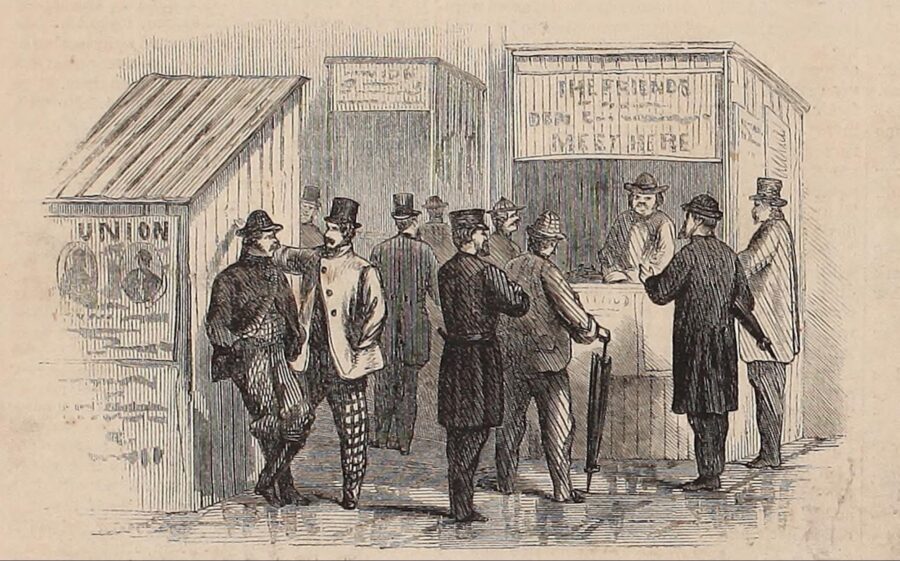
Another illustration from Frank Leslie’s election coverage: Voters obtain tickets at “ticket booths.”
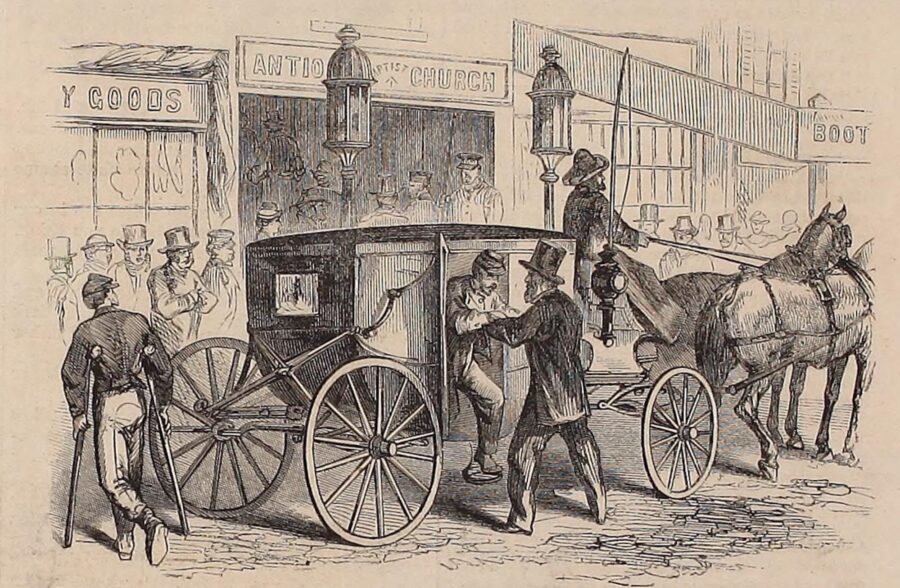
Civilians help bring invalid Union soldiers to the polls in another illustration from Frank Leslie’s Illustrated Newspaper on November 28, 1864.
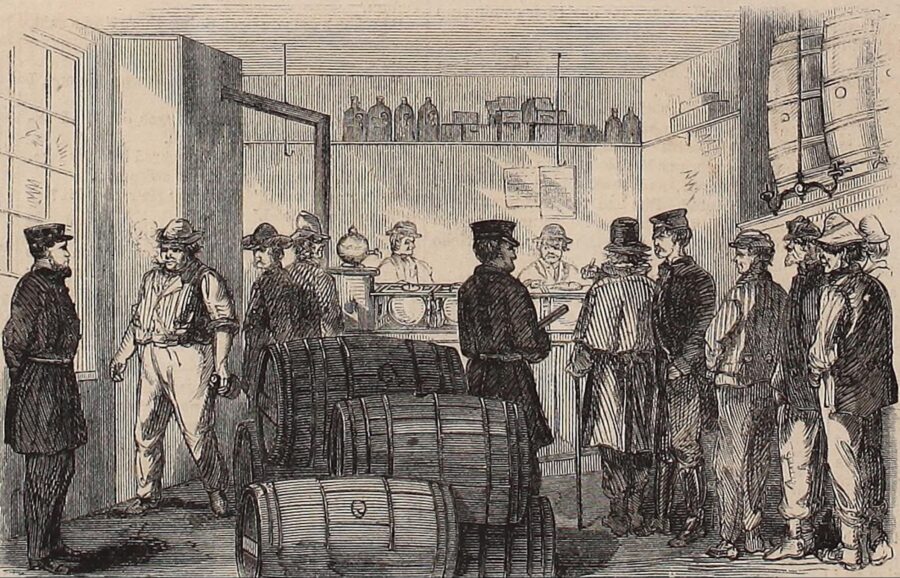
This illustration from Frank Leslie’s depicts police in New York City’s Five Points standing by as voters cast their ballots. The presence of law enforcement officers proved positive, noted the editors: “[T]here is as much order in this once lawless region as in the 5th Avenue, and we have not heard of a single case of violence.”
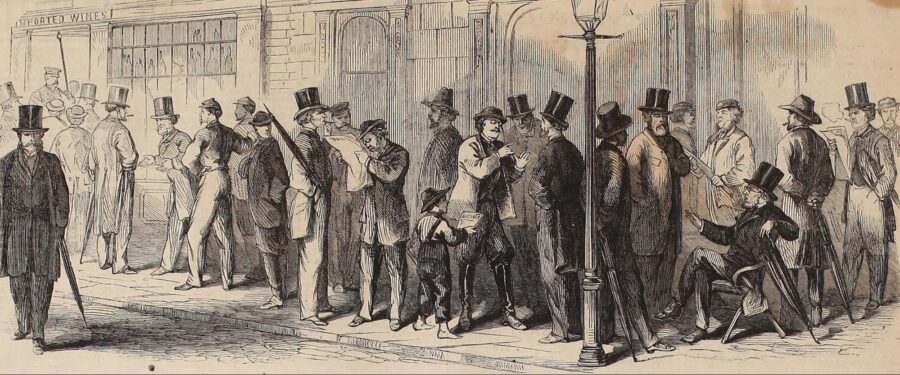
Despite early morning rains in New York City, voter turnout was high, as this Frank Leslie’s illustration of “voters awaiting their turns at the polls” shows.
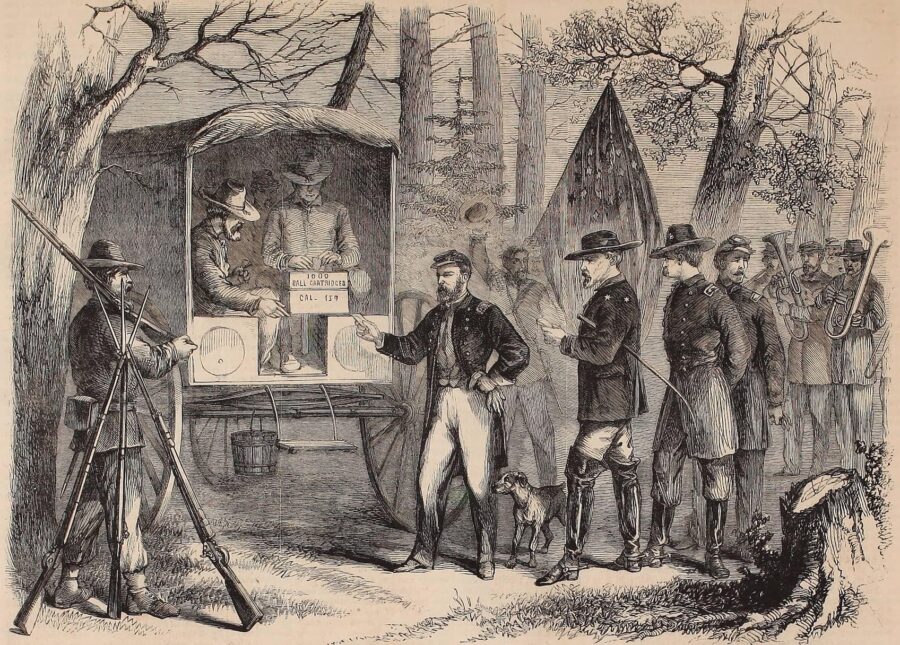
The press also covered voting at the front, where most northern states permitted their soldiers to cast ballots. Shown here, from the December 3, 1864, issue of Frank Leslie’s Illustrated Newspaper: “Election Day in the Army of the Shenandoah—scene at the polls—Gen. Sheridan, Gen. Crook, and other officers casting their votes.”
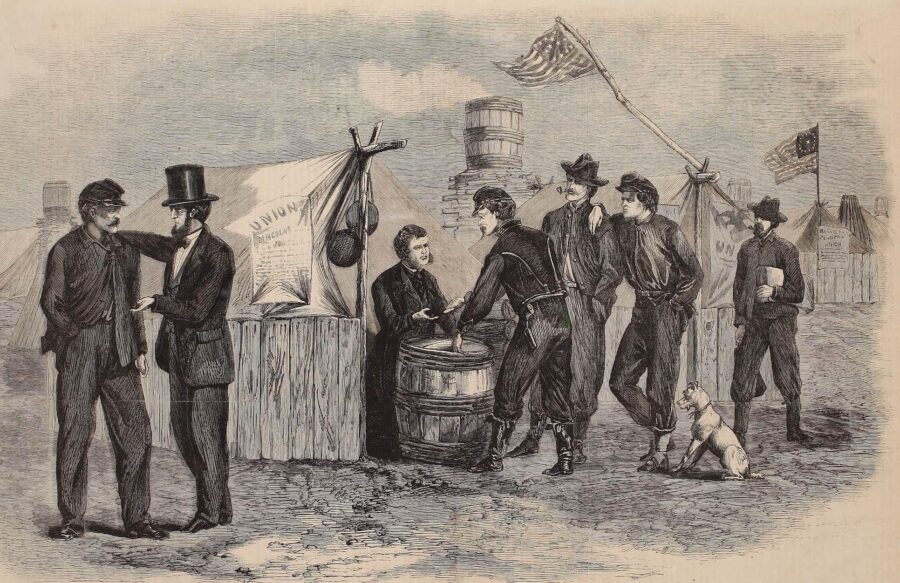
“The presidential election, Nov. 8—scene at the polls in the Army of the Potomac—soldiers voting,” from Frank Leslie’s December 3, 1864, issue.
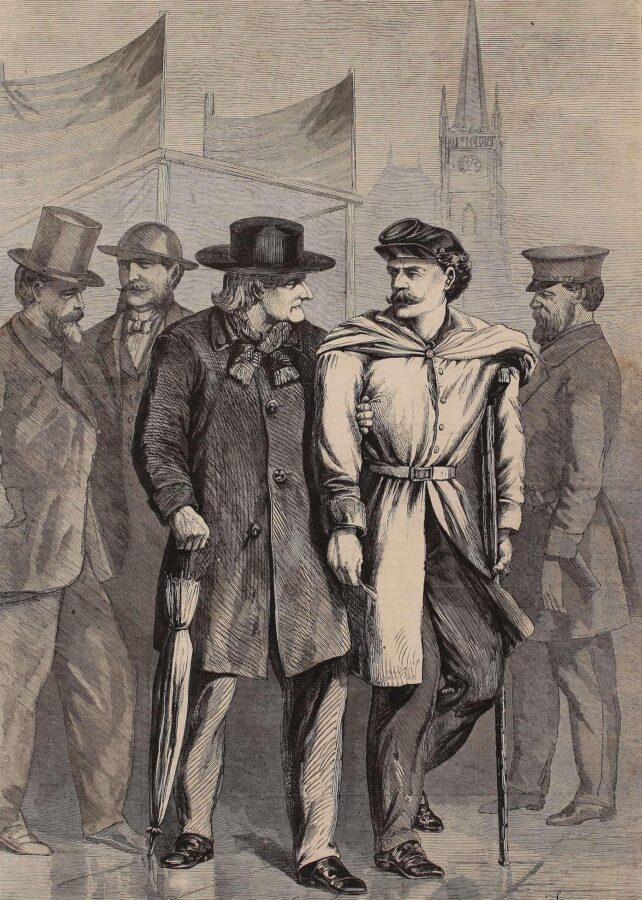
Frank Leslie’s devoted an entire page in its November 26, 1864, issue to this illustration captioned “The presidential election of 1864—scene at the polls in N.Y.—the veterans of 1812 and 1864.”
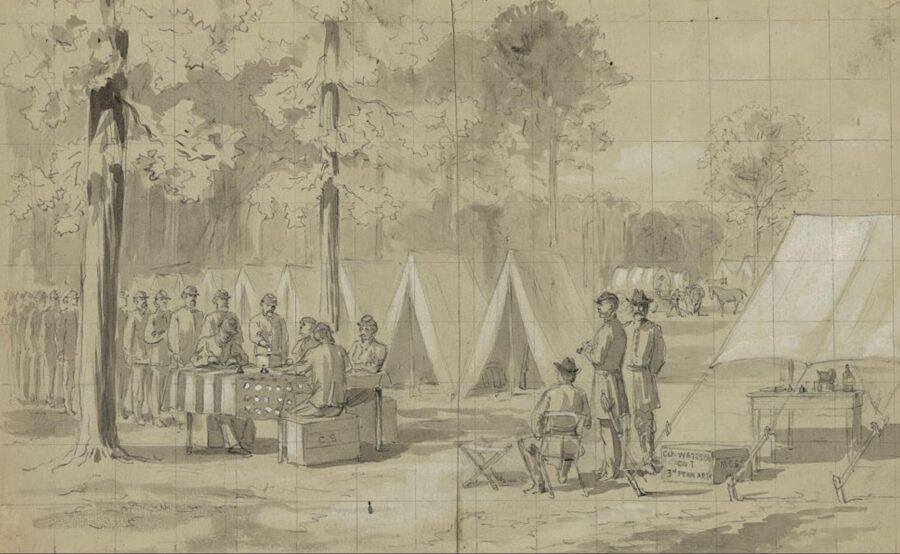
The month before the election, artist William Waud made this sketch of Pennsylvania soldiers in the Army of the James casting their votes in camp. (Library of Congress)
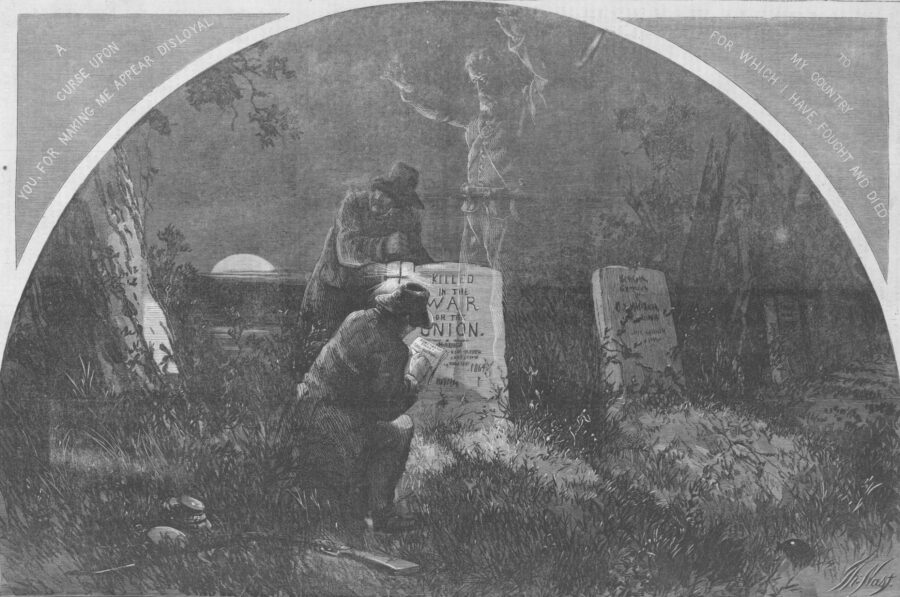
Harper’s Weekly published this Thomas Nast illustration on November 12, 1864. Titled “How the Copperheads Obtain Their Votes,” it depicts antiwar voters filling out ballots with dead soldiers’ names after allegations of the fraudulent process arose in New York.
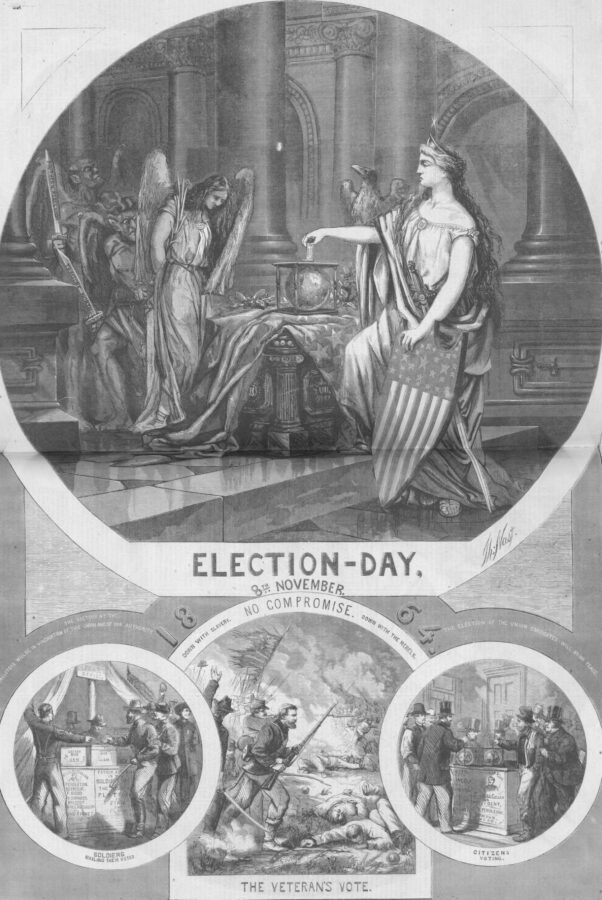
In the same issue, Harper’s Weekly published another full-page illustration by Thomas Nast, this one a series of pro-Lincoln scenes that equate a vote for the incumbent as necessary to preserving the country. “Victory at the ballot-box will be vindication of this Union and of our authority,” it reads in part.

